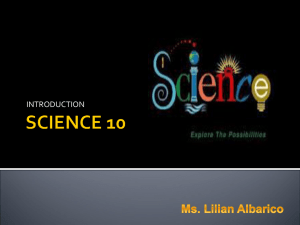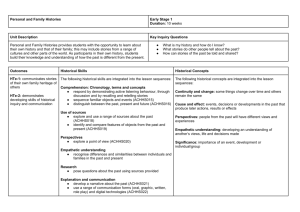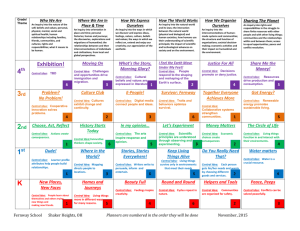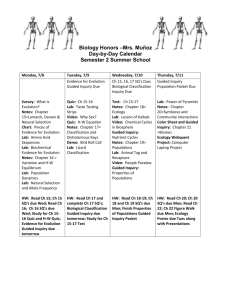Using Science to Solve Environmental Problems
advertisement
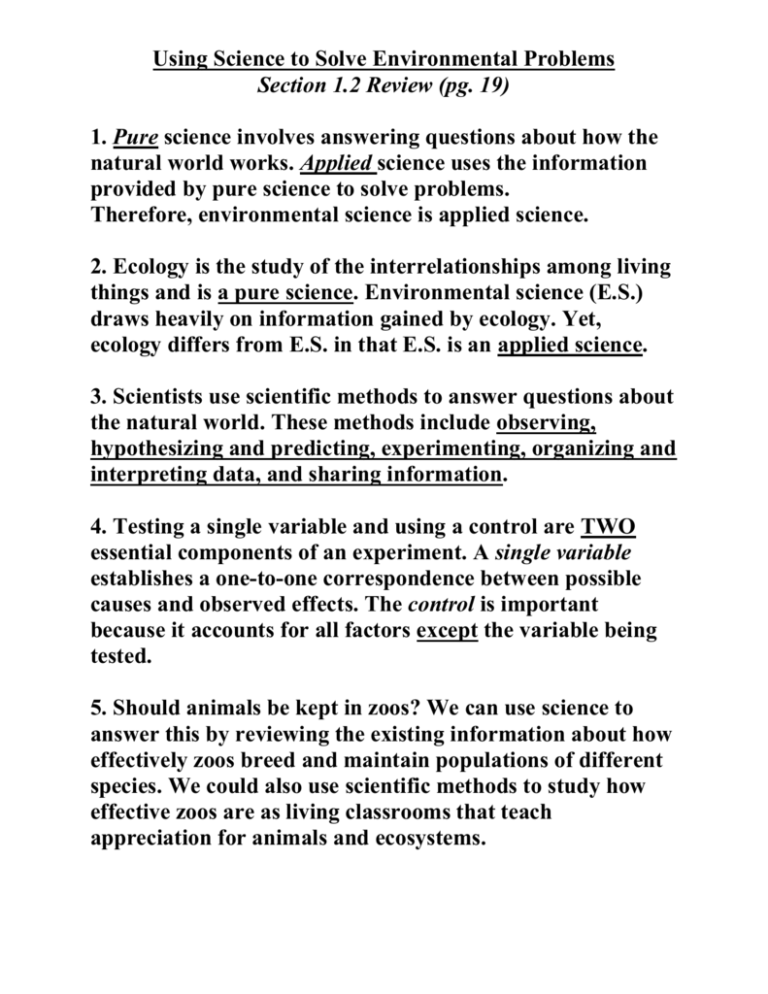
Using Science to Solve Environmental Problems Section 1.2 Review (pg. 19) 1. Pure science involves answering questions about how the natural world works. Applied science uses the information provided by pure science to solve problems. Therefore, environmental science is applied science. 2. Ecology is the study of the interrelationships among living things and is a pure science. Environmental science (E.S.) draws heavily on information gained by ecology. Yet, ecology differs from E.S. in that E.S. is an applied science. 3. Scientists use scientific methods to answer questions about the natural world. These methods include observing, hypothesizing and predicting, experimenting, organizing and interpreting data, and sharing information. 4. Testing a single variable and using a control are TWO essential components of an experiment. A single variable establishes a one-to-one correspondence between possible causes and observed effects. The control is important because it accounts for all factors except the variable being tested. 5. Should animals be kept in zoos? We can use science to answer this by reviewing the existing information about how effectively zoos breed and maintain populations of different species. We could also use scientific methods to study how effective zoos are as living classrooms that teach appreciation for animals and ecosystems. Lesson Motivator 1. a) What do you know about plants in general that you have learned in other classes? b) What classes did you learn about plants in? a. Plants are green because of chlorophyll, they absorb carbon dioxide and release oxygen, they are a carbon sink, they help regulate climate, etc. b. Probably learned about these things in science class, etc. 2. Describe as much as you can about our classroom plant (height, colour, types of leaves, texture, etc.) a. They are using one of the methods of scientific inquiry: observation 3. How often does this plant need to be watered? How many hours of sunlight must it have, and should it be direct or indirect? What kind of fertilizer is best? a. Don’t know?! Make a prediction or come up with a hypothesis. Need to experiment to find out these answers. Can do this using a test plant and a control plant. This is also a method of scientific inquiry: experimentation. 4. How would you make sense of your experiments? a. Collect data in a chart or keep records of some kind and interpret the data. This is also a method of scientific inquiry: organizing and interpreting data. 5. What should we do with the info gathered from the experiments? a. Can graph the results. This is also a method of scientific inquiry: using graphs 6. What do you do with graphed information? a. Use it for own self to keep plant healthy and share it with others so they can do the same! This is also a method of scientific inquiry: sharing and communicating results of scientific method used
